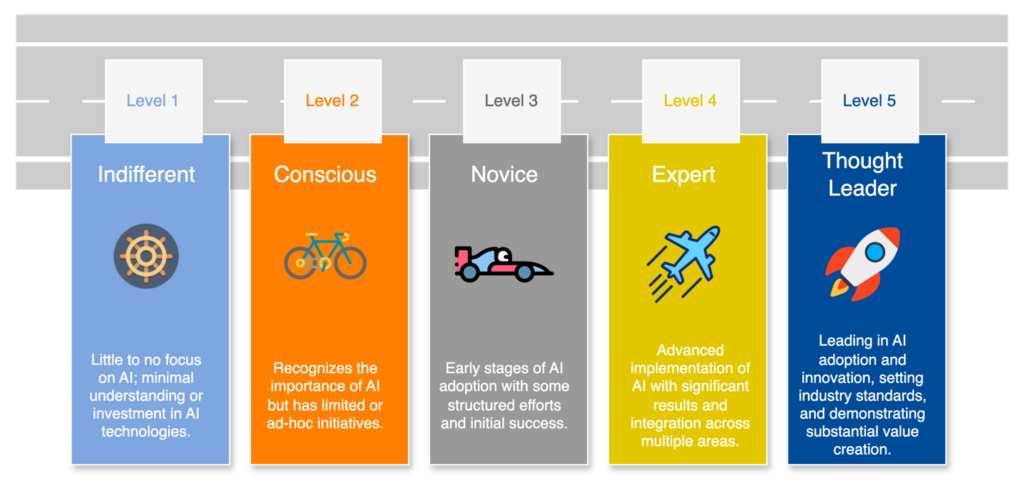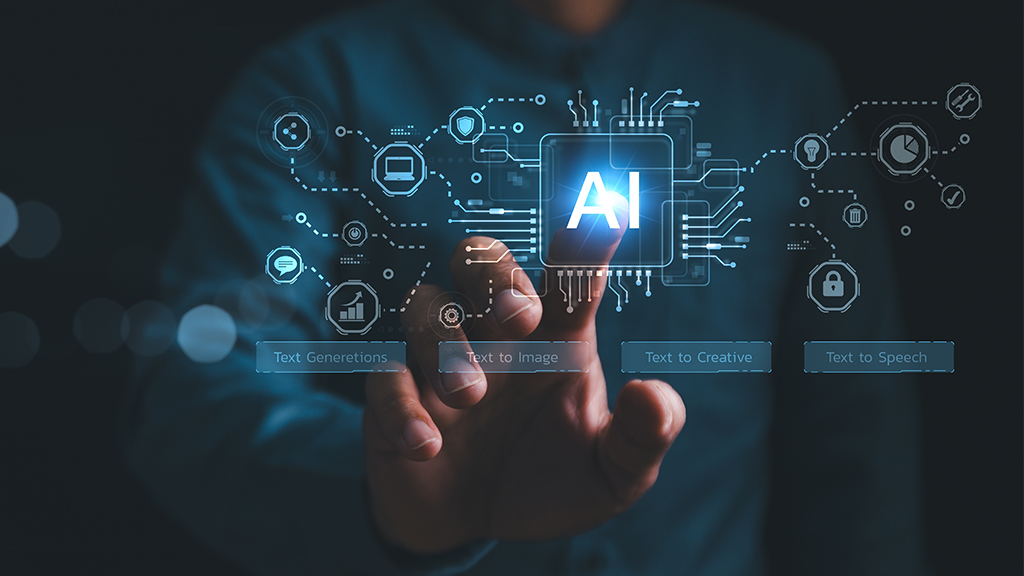Artificial Intelligence (AI) has come a long way – from Alan Turing’s Test in the 1940s to today’s rapid rise of generative AI. This transformation is happening faster than ever, pushing organizations to either adapt or risk being left behind. Companies that embrace AI aren’t just keeping up, they’re streamlining operations and gaining a sharp competitive edge.
But successful AI adoption isn’t about chasing trends. It’s about aligning AI initiatives with real business goals, making strategic shifts, and tracking progress with clear metrics. Without this focus, many organizations launch AI projects that fail to deliver meaningful impact. This challenge becomes even more critical with generative AI, where its vast potential can easily lead companies to dive in without a clear connection to business objectives that makes them miss the mark. The real question isn’t whether to adopt generative AI – it’s how to do so strategically to drive genuine transformation.
This blog explores how organizations can strategically internalize generative AI within their organization’s core operations, culture, and strategic objectives through AI Native Assessment Framework. It also outlines the five maturity levels of generative AI internalization, providing a roadmap for businesses to harness AI’s transformative potential effectively.
Read more: How to start your generative AI journey: A roadmap to success?
AI Native Assessment Framework: A blueprint to effective AI adoption
The AI-Native Assessment Framework is a roadmap that helps organizations understand how well they’re using artificial intelligence (AI), especially generative AI, to power their business. It takes a close look at how AI fits into a company’s daily operations, long-term strategy, and overall culture.
This framework doesn’t just highlight where a business stands today, it uncovers hidden opportunities, pinpoints gaps, and guides teams toward smarter generative AI integration. The goal? To spark innovation, boost efficiency, and unlock new paths for growth. This framework dives deep into how effectively AI is internalized across critical dimensions like:
- Strategic alignment – Ensuring AI initiatives directly support business goals.
- Technology infrastructure – Building scalable and robust systems for AI integration.
- Data management – Leveraging high-quality data to fuel intelligent solutions.
- Talent readiness – Cultivating AI-savvy teams equipped to drive transformation.
- Ethical governance – Embedding responsible AI practices to build trust and compliance.
Quick read: Gain trust and transparency with data governance in the age of generative AI.
The journey to AI-driven success: Five levels of generative AI internalization
Becoming “AI-native” is a goal shared by many organizations, but it’s not a one-time leap, it’s a multi-step progression. Each stage marks a deeper integration of generative AI technology into operations, culture, and strategic direction. The five levels of generative AI internalization provide a roadmap to move from exploration to becoming AI-driven leaders in their industry.
Let’s guide you through each of these levels, highlighting their key characteristics and challenges, to help you gain a clear understanding of where your business currently stands.

Level 1: Indifferent
Organizations at this level exhibit little to no focus on AI. They lack awareness, investment, and strategy around AI adoption. Operations remain traditional, with limited understanding of the potential benefits AI can deliver.
Key characteristics
- Limited awareness of AI’s potential.
- No structured AI strategy or roadmap in place.
- Reliance on traditional processes and workflows.
- Minimal budget allocation for AI-related research or experimentation.
Challenges
- High risk of falling behind competitors.
- Inefficiency in processes that could be enhanced by AI.
Level 2: Conscious
In this stage, organizations recognize the importance of AI and start exploring its possibilities through ad-hoc initiatives. However, their efforts lack structure, scalability, and alignment with broader goals.
Key characteristics
- Small-scale experiments with generative AI solutions, often confined to a single department (e.g., chatbots for customer service).
- Leadership begins to acknowledge AI’s role in competitive advantage.
- Lack of a cohesive framework for measuring outcomes or aligning with business goals.
Challenges
- Initiatives remain isolated and disconnected from broader organizational strategy.
- Limited scalability and integration across departments.
Level 3: Novice
Organizations in this stage are in the early stages of AI adoption, with some structured efforts and initial success. AI is used in specific areas to solve targeted problems, but it’s not yet a fully integrated part of operations.
Key characteristics
- Defined generative AI use cases and pilot projects with measurable outcomes.
- Collaboration across departments to test AI applications (e.g., automating routine tasks).
- Early investments in AI talent and infrastructure.
- Positive but limited impact on business outcomes.
Challenges
- Scalability of solutions remains a hurdle.
- Lack of an enterprise-wide AI strategy.












